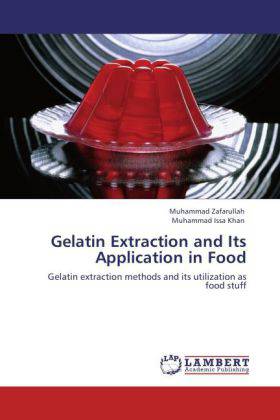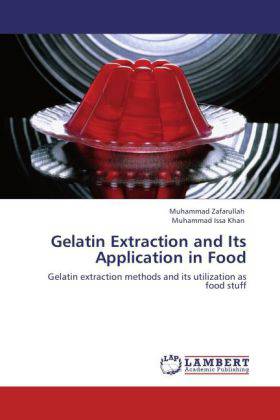
- Afhalen na 1 uur in een winkel met voorraad
- Gratis thuislevering in België vanaf € 30
- Ruim aanbod met 7 miljoen producten
- Afhalen na 1 uur in een winkel met voorraad
- Gratis thuislevering in België vanaf € 30
- Ruim aanbod met 7 miljoen producten
Zoeken
Gelatin Extraction and Its Application in Food
Gelatin extraction methods and its utilization as food stuff
Muhammad Zafarullah, Muhammad Issa Khan
Paperback | Engels
€ 48,45
+ 96 punten
Omschrijving
Gelatin is a transparent substance, having no color, flavor, easily breakable and almost having no taste. It is consequent from animal bones and skin. Gelatin is categorized as foodstuff and it is produced by the irreversible hydrolysis of collagen. Mostly it is imported from the foreign countries, where the gelatin is extracted from pigs and other unlawful raw material, which is strongly forbidden to consume, according to Islamic code of conduct. More often yoghurt is produced by the controlled fermentation of milk by using two species of bacteria (Lactobacillus sp. and Streptococcus sp.). Gelatin can be used as a stabilizer in yoghurt. The present study was designed with objectives to optimize the conditions for gelatin extraction from bones of cow and buffalo and to compare the activity of extracted gelatin with commercial gelatin in yoghurt as stabilizing agent.
Specificaties
Betrokkenen
- Auteur(s):
- Uitgeverij:
Inhoud
- Aantal bladzijden:
- 100
- Taal:
- Engels
Eigenschappen
- Productcode (EAN):
- 9783659112331
- Verschijningsdatum:
- 2/05/2012
- Uitvoering:
- Paperback
- Formaat:
- Trade paperback (VS)
- Afmetingen:
- 152 mm x 229 mm
- Gewicht:
- 158 g

Alleen bij Standaard Boekhandel
+ 96 punten op je klantenkaart van Standaard Boekhandel
Beoordelingen
We publiceren alleen reviews die voldoen aan de voorwaarden voor reviews. Bekijk onze voorwaarden voor reviews.











